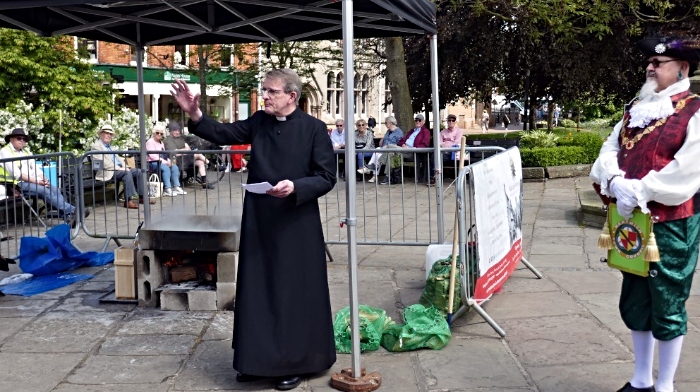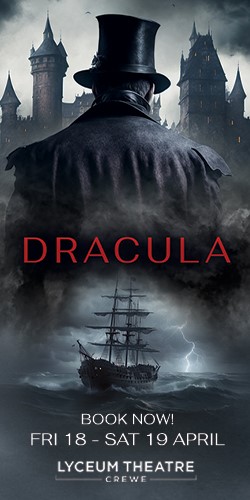
Nantwich Museum has celebrated the town’s salt-making history by making salt in the square by the traditional method of evaporating brine.
Visitors viewed the boiling of local brine similar to that taken from Nantwich’s Old Biot salt spring, which for centuries supplied the brine which the town’s prosperity was built on.
The remains of that spring can still be seen on the banks of the river downstream from the Town Bridge.
Experts from Nantwich Museum and Middlewich Heritage Trust were on hand to explain the process and answer questions.
Around 60 litres of brine were employed and the demonstration served as an archaeological experiment to learn more about how salt was made.
Measurements were taken of temperature, salinity and the rate of evaporation throughout the boil.
In the past, the people of Cheshire’s salt making towns appreciated the gift of brine.
On Ascension Day up until the early 18th century residents of Nantwich, once known as Hellath Wen, would decorate the Old Biot.
Dressed in their gala clothes they would spend the day dancing, feasting and making merry around the spring.
The occasion is depicted in a painting by Nicholas Ferenczy which can be seen in the museum.
On this occasion, Rev Dr Mark Hart from St Mary’s Church was introduced by the Town Crier Devlin Hobson and blessed the brine and salt-making process, recalling the Ascension Day celebrations.
Those celebrations included the singing of a thanksgiving hymn, “Blessing the Brine.”
The demonstration included a display telling the story of Cheshire salt and the types of salt that could be produced.
The museum is developing a science workshop aimed at school years 4 and 5 called “A story of a River”.
It will include a river and lakeside tour, and explore topics science, geography, geology and local history topics.
Pupils will be scientists for the day, exploring the properties of our water systems and the local brine, making their own salt, and using techniques and equipment to test the water and brine samples.



















The Science Workshop is a fantastic idea, giving schoolchildren, visiting with their teachers, a chance for hands on experiments and learning from nature. The education team at the Museum already do an amazing job. Last year over 2500 pupils went to the Museum on official school visits learning about the Fire of Nantwich, which fits in with the Great Fire of London, part of the national curriculum. What a great resource the Museum is for our town!